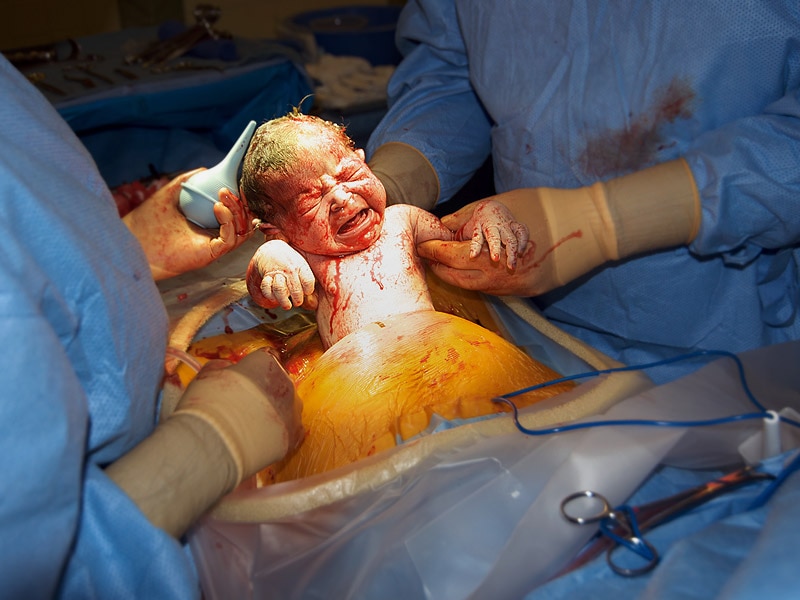C-sections could influence babies’ ability to focus
Being delivered through a caesarean section influences at least one form of babies’ ability to concentrate. It slows their spatial attention, which plays a role in how well they are able to prioritize and focus on a particular area or object that is of interest. These are the findings of Scott Adler and Audrey Wong-Kee-You of York University in Canada, published in Springer’s journal Attention, Perception, & Psychophysics.
Very early birth factors such as birth weight and a mother’s age impact the development of a child. However, very little is known about how the actual birth event influences a baby’s cognitive and brain development. Adler and Wong Kee-You’s study is therefore important as it is the first on birth experiences to compare the spatial attention of babies delivered vaginally to those born through caesarean sections. Such research is noteworthy in light of the steadily increasing number of babies delivered through such c-sections.
The study shows that the type of birth experience influences one form of infants’ attention, and possibly any cognitive process that relies on spatial attention. It consisted of two experiments involving different groups of three-month-old infants. Their eye movement was monitored, as an indication of what caught the babies’ attention. Eyes cannot move to where someone’s attention is not directed. Therefore, disruptions or changes in the mechanisms involved in attention would manifest in subsequent eye movement.
The first experiment, a spatial cueing task, tested the stimulus-driven spatial attention of 24 babies. A peripheral cue was presented to the edge of their eye line, indicating the subsequent location of a target stimulus. This activated infants’ saccadic (or quick, jerky) eye movement, so that their eyes turned faster towards the place where a target was subsequently presented.
The stimulus-driven, reflexive attention and saccadic eye movement of those babies born via a caesarean were found to be slowed compared to those of vaginally delivered infants. This is not because such babies try to more accurately select the right cues. The researchers believe it is because caesarean delivered babies’ brain development was impacted by their method of birth and their ability to initially allocate their spatial attention. It is still unclear whether this effect lasts throughout a lifetime.
 The researchers found no difference in the cognitively driven, voluntary attention of babies with different birth experiences. This followed the second experiment, a visual expectation task, involving 12 babies. Stimuli predictably and alternately appeared on the left and right side of a monitor. It increased saccadic eye movement as babies anticipated where the forthcoming stimulus would appear. Such anticipatory eye movements are linked to cognitive-driven spatial attention.
The researchers found no difference in the cognitively driven, voluntary attention of babies with different birth experiences. This followed the second experiment, a visual expectation task, involving 12 babies. Stimuli predictably and alternately appeared on the left and right side of a monitor. It increased saccadic eye movement as babies anticipated where the forthcoming stimulus would appear. Such anticipatory eye movements are linked to cognitive-driven spatial attention.
“The results suggests that birth experience influences the initial state of brain functioning and should, consequently, be considered in our understanding of brain development,” says Adler.
“The findings add a potential psychological implication to the roster of impacts that caesarean section delivery might have,” adds Wong-Kee-You.
###
Reference: Adler, S.A. & Wong-Kee-You, A.M.B (2015). Differential attentional responding in caesarean versus vaginally delivered infants, Attention, Perception, & Psychophysics. DOI 10.3758/s13414-015-0969-3
###
Joan Robinson
.(JavaScript must be enabled to view this email address)
49-622-148-78130
Springer